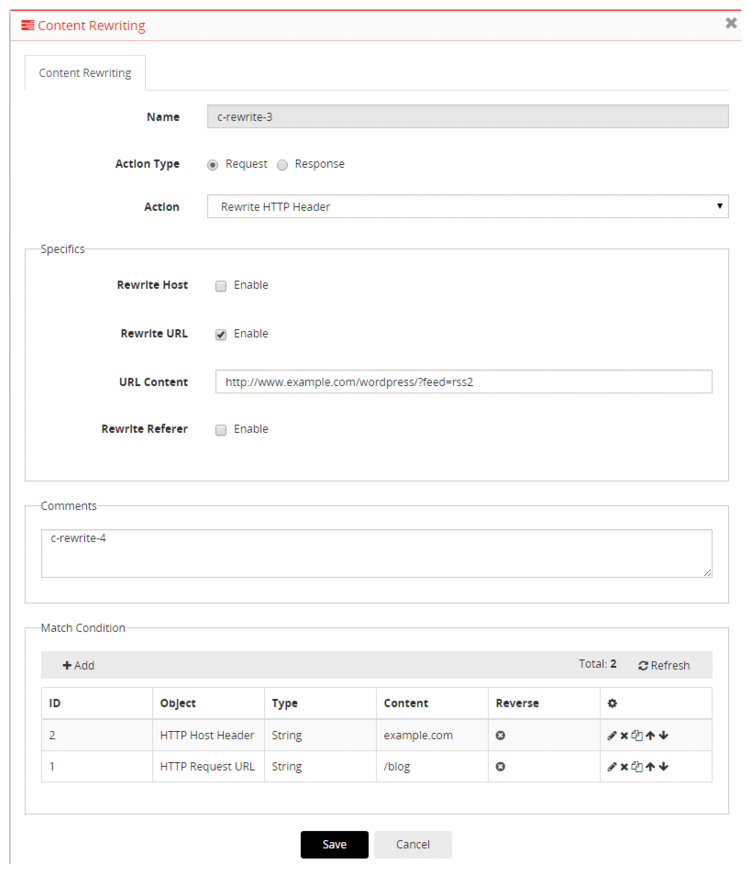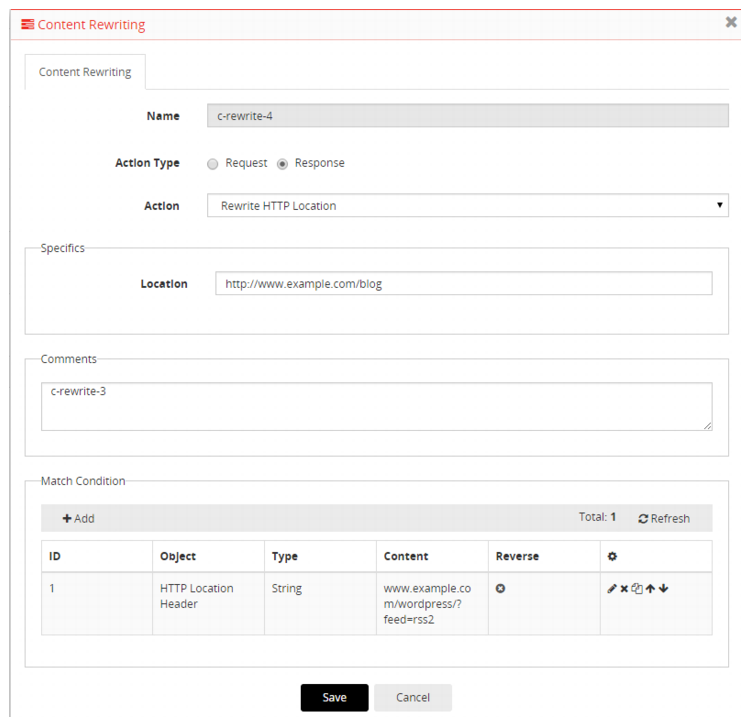Example: Rewriting the HTTP request and response to mask application details
Another use case for external-to-internal URL translation involves masking pathnames that give attackers information about your web applications. For example, the unmasked URL for a blog might be http://www.example.com/wordpress/?feed=rss2, which exposes that the blog is a wordpress application. In this case, you want to publish an external URL that does not have clues of the underlying technology. For example, in your web pages, you create links to http://www.example.com/blog instead of the backend URL.
On FortiADC, you create two rules: one to rewrite the HTTP request to the backend server and another to rewrite the HTTP response in the return traffic.
Figure 30 shows an HTTP request rule. In the match condition table, the rule is set to match traffic that has the Host header domain
example.com and the relative URL
/blog in the HTTP request URL. The rule action rewrites the request URL to the internal URL
http://www.example.com/wordpress/?feed=rss2.
Figure 31 shows the rule for the return traffic. In the match condition table, the rule is set to match traffic that has the string
http://www.example.com/wordpress/?feed=rss2 in the Location header of the HTTP response. The action replaces that URL with the public URL
http://www.example.com/blog.



